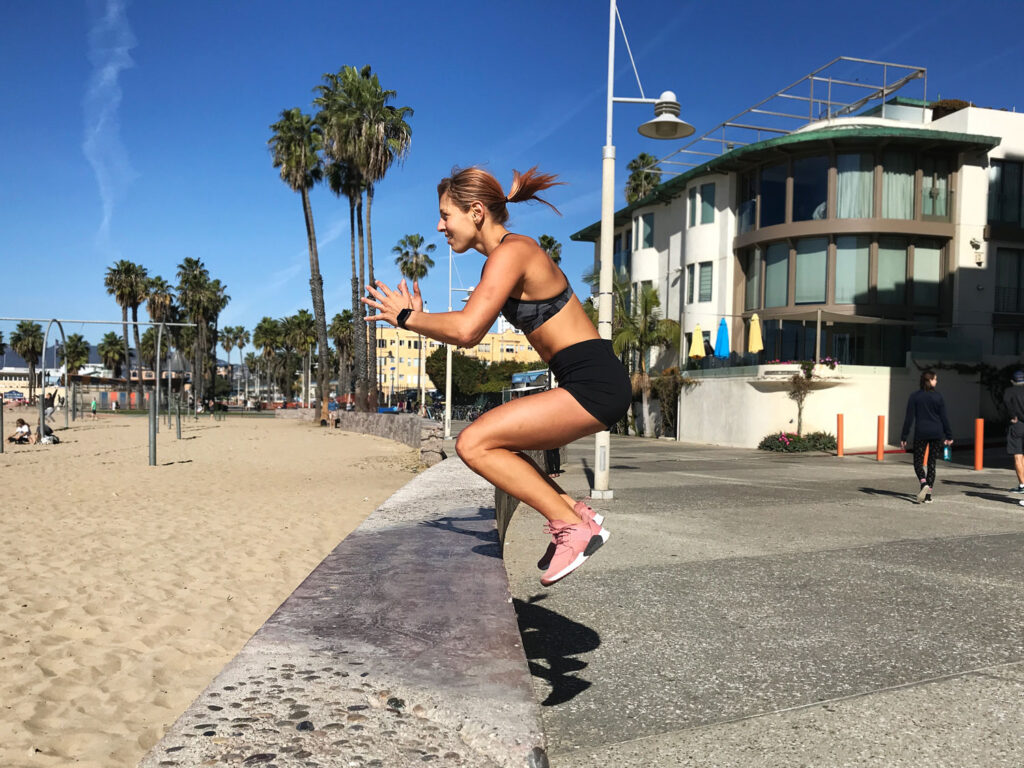
No matter how much my fitness goals have evolved over the years—from building all-around athleticism, to mastering gymnastics, and now to focusing on Brazilian jiu-jitsu—plyometric exercises have always been a staple in my training.
Why? Because they’re one of the most effective ways to improve strength, speed, and agility. Whether you’re an athlete looking to boost performance or just someone trying to get stronger and fitter, plyometrics offer benefits that extend beyond the gym and into everyday life.
In this article, we’ll explore why plyometrics should be part of everyone’s workout routine, how they build athleticism, and share some lower-impact plyometric options that are accessible to all fitness levels.
Why Plyometrics Are Essential for Strength, Speed, and Agility
Plyometrics—also known as “jump training” or “explosive exercises”—are dynamic movements designed to increase muscular power by stretching and then rapidly contracting muscles. This stretch-shortening cycle improves your ability to generate force quickly, which translates directly into improved athletic performance.
Here’s how plyometrics target three critical areas of fitness:
1. Increased Power and Strength
Plyometrics build power by training your muscles to contract more explosively. Exercises like box jumps, jump squats, and broad jumps force your body to overcome resistance and produce force quickly. This is important for both strength and speed, as explosive power allows you to lift heavier weights and move more efficiently in sports and daily life.
2. Enhanced Speed and Agility
Plyometric exercises train your muscles to generate force quickly, improving both your acceleration and reaction time. Whether you’re sprinting, changing direction, or reacting to an opponent in a sport, plyometrics help you move faster and more fluidly. Movements like lateral bounds or jump lunges mimic the rapid changes in direction often needed in athletic activities, improving your agility and balance.
3. Better Coordination and Body Control
Many plyometric exercises involve multi-directional movement, which challenges your body to stay balanced and coordinated. For example, skater jumps or tuck jumps require you to control your center of gravity and land softly, improving your overall coordination. This makes plyometrics not just a tool for power, but also for fine-tuning your body’s ability to react and move efficiently in any direction.
Lower-Impact Plyometric Options for All Fitness Levels
While high-intensity plyometrics like box jumps or burpees are often associated with athletes, you don’t need to go all-out to reap the benefits. There are plenty of lower-impact options that are gentler on your joints while still helping you build strength, speed, and agility.
Here are some beginner-friendly, low-impact plyometric exercises to try:
1. Squat to Toe Raise
This movement builds lower-body strength and power without the impact of jumping. Start in a squat position, then explode upward onto the balls of your feet, raising your heels as high as you can. Slowly lower back down and repeat. This exercise trains your leg muscles for explosiveness while minimizing impact on the joints.
2. Lateral Speed Step
Stand next to a low step or platform. Step up and down as quickly as possible, switching feet rapidly to improve foot speed and coordination. The lateral movement also builds agility, making it perfect for sports that involve quick changes of direction.
3. Step-Up Jumps
Find a low box or step and perform a step-up, driving one knee upward while stepping. As you progress, you can add a hop or increase your speed to make it more challenging. This exercise strengthens the legs and mimics the power needed in activities like running or climbing.
4. Low Box Skater Jumps
Skater jumps help develop lateral agility and leg strength while reducing the impact of traditional plyometric exercises. Perform these on a low box or soft surface, jumping from side to side while focusing on balance and control. This is great for building strength in your glutes and quads, which are key for athletic movements.
5. Plank to Squat
Starting in a plank position, jump your feet forward to land in a squat, then jump back to plank. This low-impact exercise builds core strength and lower-body explosiveness. If jumping is too intense, you can modify it by stepping your feet forward instead of jumping.
Plyometrics: Not Just for Athletes
While plyometrics are often associated with high-level athletes, their benefits go far beyond sports performance. Whether your goal is to improve your strength, burn fat, or simply stay agile as you age, plyometrics can help you get there. They enhance functional movement, which translates into better performance in everyday activities like walking, lifting, or even climbing stairs.
Plus, plyometric exercises add variety and fun to your workouts. Incorporating just a few minutes of explosive movements can keep your fitness routine exciting, while delivering fast results for both cardio and strength development.
Add Plyometrics to Your Routine Today
Plyometrics are one of the most powerful tools you can use to improve your strength, speed, and agility—regardless of your fitness level. By focusing on explosive movements that challenge your muscles and coordination, you’ll see noticeable improvements in your athleticism, endurance, and body control.
Whether you’re an athlete aiming to boost performance or someone simply looking to get stronger and more agile, plyometric exercises can help you achieve your goals faster. Start small with lower-impact versions, and as you build confidence, add more advanced movements to push your limits.
Your body is capable of amazing things—add plyometrics to your workouts and see how far it can take you.


